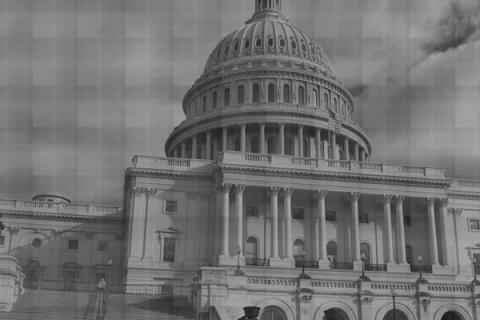By David Cay Johnston
New York Times
May 22, 2007
A levy originally intended to ensure that the richest investors cannot live tax-free is taking back a much larger portion of the Bush tax cuts going to those who make less than $100,000 than to those who earn more than $1 million, according to a new analysis by the Joint Committee on Taxation.
Separately, the nonpartisan Tax Policy Center said yesterday that a simulation using its widely respected computer model showed a simple way to eliminate the levy, known as the alternative minimum tax, for nearly everyone who makes less than $200,000.
The alternative tax will cost Americans who make $50,000 to $100,000 about $6.1 billion, or 13 percent, of their Bush tax cuts this year, according to the analysis by the committee, whose staff makes the official estimates that Congress uses to set tax policy. Those making $1 million or more would lose $2.2 billion, or 3 percent.
The original tax, enacted in 1969, applied only to investors with high incomes — more than $1 million, in today’s dollars — whose investment deductions permitted them to pay little or no tax.
A major change took place in 1986, under President Reagan, when most of the tax breaks for investors were replaced with routine breaks available to everyone, such as personal exemptions for taxpayers and their children, deductions for state and local taxes for those who itemize, and the standard deduction for those who do not. When President Bush, in 2001 and 2003, cut regular tax rates without changing the alternative tax rates, growing numbers of Americans making less than $1 million were pushed into the alternative tax system.
One result is a doubled tax bill for a family with four children under 17 and income of $75,000 that takes the standard deduction. That family pays an alternative tax of $3,800 instead of the $1,997 that would be owed under the regular tax, the Tax Policy Center calculated. Under either levy, the couple would get the tax credit of $1,000 a child championed by Republicans.
The joint committee’s estimate came in response to a request by Democrats on the House Ways and Means Committee. Democratic tax staff members of that committee made the document available yesterday. The estimate assumed no change in behavior by taxpayers seeking to minimize the impact of the alternative tax.
About 23 million Americans will owe the alternative tax this year, up from about 3 million last year.
Both parties have promised to address the alternative levy this year, but no agreement exists on how to replace the revenue that would be lost, which estimates put at about $70 billion this year. The only three options are less spending, more borrowing or shifting the tax burden.
The Tax Policy Center proposed a surtax of four percentage points on couples earning more than $200,000 and on single taxpayers and heads of household who earn half that, a relatively small group of taxpayers.
Over 10 years, the surtax would replace all but $92 billion of the estimated $850 billion the alternative tax would bring in over the same period, said Leonard E. Burman, co-director of the center, a joint venture of the Urban Institute and the Brookings Institution whose economists include former tax policy advisers to Presidents Reagan and Clinton and the first President Bush.
Almost everyone making less than $200,000 would pay the same amount of taxes or get a tax cut.
Mr. Burman said the proposal “is simple, eliminates a lot of complexity” in the tax code and shifts the burden back onto those the original alternative levy was meant to affect.
The original levy focused on investors, however, while the center’s proposal would have an equal impact on Americans with million-dollar-plus salaries and no investments.
It would also undo most of the Bush tax cuts for the highest-income Americans, effectively creating a top tax rate of 39 percent on wages and 19 percent on capital gains. When Mr. Bush took office, the top rates were 39.6 percent on wages and 20 percent on capital gains.
More than three-quarters of the burden of the center’s surtax proposal would be borne by those making more than $500,000. The surtax plan would roughly halve the alternative tax burden on those making $100,000 to $500,000, and would eliminate any burden for those with incomes under $100,000, which includes nearly 9 out of 10 Americans.
